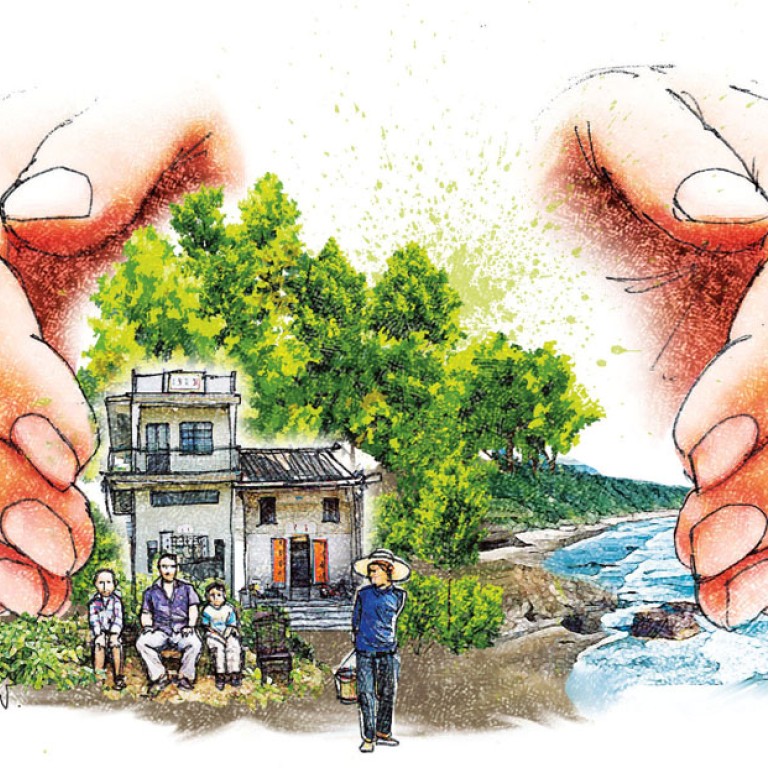
Villager rights deserve protection, but they can't trump all else
Ian Brownlee says while indigenous villager rights should be upheld, it must be done so in a way that does not degrade the environment in the surrounding country parks or flout the rules
The development secretary opened a can of worms with his suggestion that residential development could take place in country parks. However, the more complex issue is what to do with the "enclaves" that are surrounded by country parks, but not included as part of them.
A town hall meeting in Sai Kung on Saturday seems to have brought several parties together, and reports indicated that "villagers' rights" was part of the discussion.
To put this in perspective, we need to look at what other common law countries have done for their indigenous peoples in recent decades. In Canada, Australia and New Zealand, there has been a massive change in the degree of recognition given to the history of settlement and land rights of indigenous peoples. Many of the mistakes of the colonial British have been rectified by returning land or through monetary compensation.
Judgments in these places would no doubt provide precedents for our own courts, if and when they get to consider issues relating to Hong Kong's indigenous people.
The Town Planning Board need not permit village houses as of right in sensitive enclaves
Indigenous people are defined as those whose families were here before the British arrived, and many families can trace their history back 400 years or more.
The British probably did a better job in Hong Kong than in other colonies. They established a list of "recognised villages", those which were here when they arrived. These were generally respected and protected, along with occupied agricultural land, temples and burial grounds. The government also provided a range of municipal and social services.
In 1972, in order to encourage the retention of these villages and to improve housing, the government introduced the small-house policy. That enabled eligible males with lineage to an "original" village family to build a three-storey village house, subject to restrictions.
Almost all of the enclaves arise from the government deliberately avoiding inclusion of recognised villages and associated private land within the country parks when they were drawn up in the 1970s. The government acknowledged the rights of the indigenous peoples, while establishing the country parks for the benefit of all Hong Kong people.
These areas of private land within the enclaves can be sold to anyone, as can the village houses.
The enclaves have been beyond the control of the marine and country parks authority and the Town Planning Board, resulting in "uncontrolled development" on this private land.
With the public outcry over development by a non-indigenous owner in Tai Long Sai Wan, the government agreed to look at moving some of the enclaves within the country park boundaries, or for the Town Planning Board to gazette plans which put these areas under statutory control.
This action is now in progress and the outcomes are not necessarily to everyone's liking. New plans have been published by the Town Planning Board for public representation. The one for Hoi Ha, for example, includes a village zone, a coastal protection area, a conservation area and a green belt zone.
These zones have been determined by the Town Planning Board after consideration of technical information presented to it. An assessment of the likely demand for additional small houses for indigenous males from Hoi Ha Village would result in the population of the village growing from 110 to 590.
An ecological assessment justified the extent of the conservation zone and the coastal protection area. The plan now gives the government powers to protect these zones and prosecute offenders.
The main argument is usually about how much land is for conservation and how much is for village development. Usually, the conservationists claim the village zone is too big, while the villagers claim it is too small.
The shock realisation has been that while the plans may protect the conservation areas, they also identify for the first time where the village can expand. As with most villages in the enclaves, no public sewers or sewage treatment will be provided, just inadequate septic tanks.
Given the international recognition of the need to protect indigenous people's heritage and lands, it is only correct that these villages be properly zoned. However, the problems arise from what happens next. It is unacceptable if the implementation of these policies results in degradation of the environment, poor living conditions within the villages and lack of municipal services resulting in pollution. Now that these villages are defined on the plans, the government must expand its programme of providing adequate services to villages and ensure they meet modern standards.
The small-house policy can also be implemented with stricter controls on site formation and building construction. The powers are already there, but it is a question of how they are used.
The Town Planning Board need not permit village houses as of right in sensitive enclaves; it could require an application, so the impact can be assessed and conditions imposed.
The demand for village houses would reduce if the Lands Department enforced a condition that prohibited their sale to anyone but another eligible male villager. Anything else defeats the original principle of providing housing for the indigenous villagers.
Ironically, many of the opponents of the expansion of village zones are owners who are "outsiders" and have themselves benefited from the vagaries of the way the existing policy is implemented.

